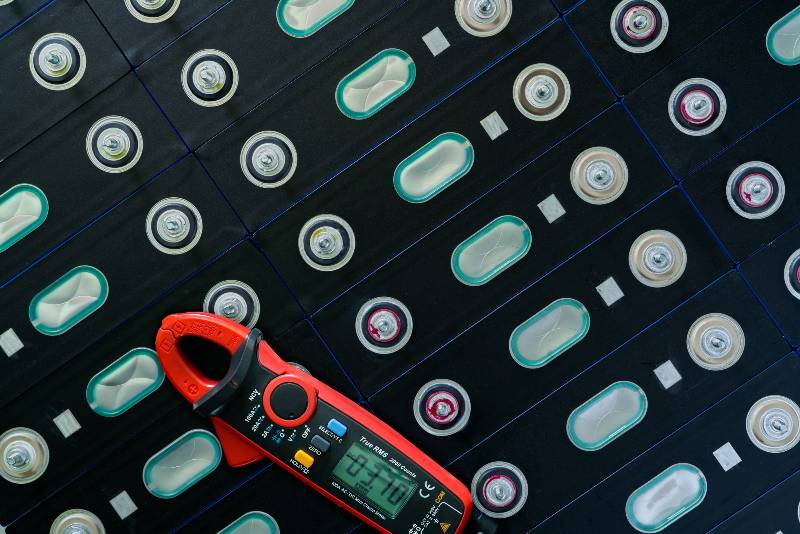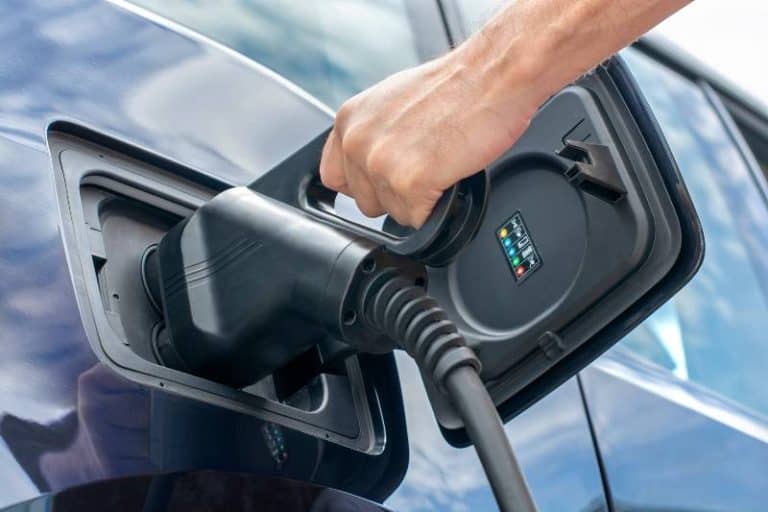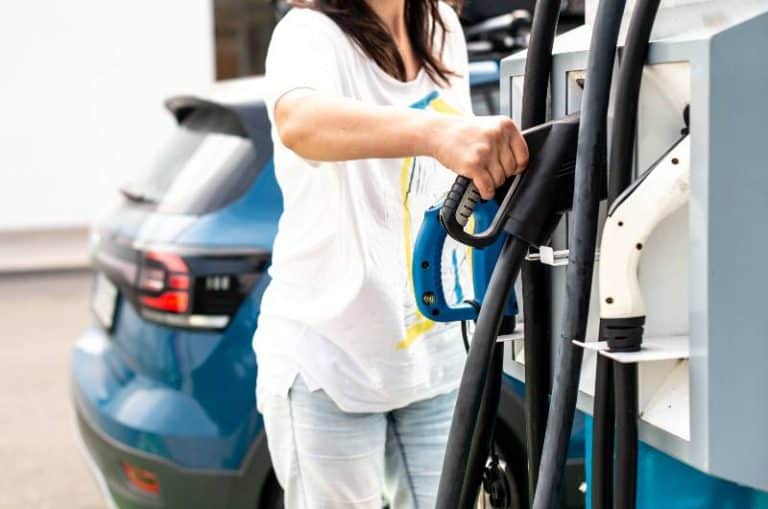LFP vs NMC Battery Showdown! Which One is the Best for EVs?
There has been a lot of debate lately about which type of battery chemistry is better for electric vehicles: LFP or NMC. Some people swear by LFP batteries, while others think that NMC batteries are the way to go. So, which one is the best? In this blog post, we will compare and contrast LFP vs NMC batteries for EVs and see which one comes out on top!
LFPs offer a greater round-trip efficiency and roughly five times as many charge cycles as NMCs. Additionally, at greater temperatures and higher charging and discharging rates, LFPs degrade less quickly than NMCs. Therefore, LFPs are more suitable to manage quick charging and high-performance driving.
Key Takeaways
- LFPs offer a greater round-trip efficiency and roughly five times as many charge cycles as NMCs.
- At greater temperatures and at higher charging and discharging rates, LFPs degrade less quickly than NMCs.
- NMC batteries are cheaper to buy and have a higher energy density than LFP.
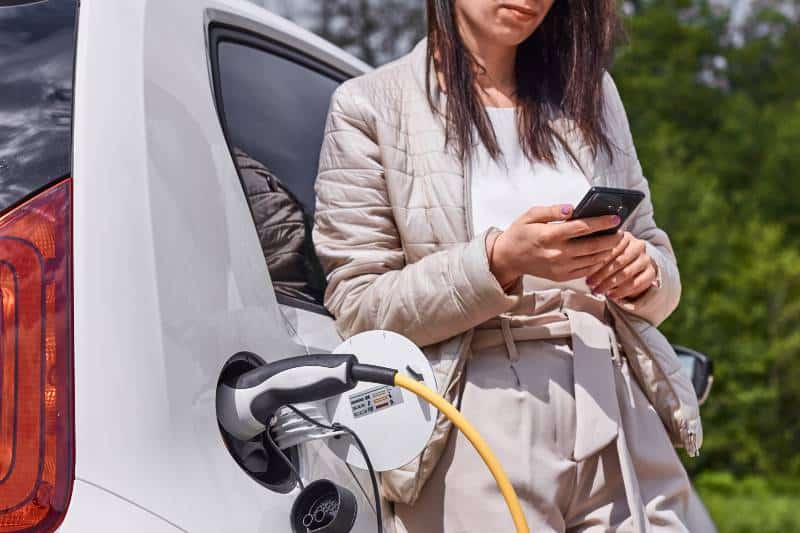
What Is A Lithium-ion Battery?
Scientists have been working on lithium-ion batteries for years now, and they are starting to be used more frequently in small electronic devices. Some even believe that these batteries could power electric vehicles one day. Though there is still some work to do, this could be the future of energy storage.
Many electric vehicles (like e-bikes) and other types of portable electronics use lithium-ion (Li-ion) batteries. These are a type of rechargeable battery that has more energy than normal lead-acid or nickel-cadmium rechargeable batteries, so the size of the whole battery pack can be smaller.
There Are Two Main Types Of Lithium-ion Batteries Chemistry
LFP battery
Many new electric vehicles, like the updated MG ZS EV, BYD Atto 3, and the base models of the Tesla Model 3 and Model Y, have switched to lithium-iron-phosphate (LFP) batteries because of their cheaper cost and greater sustainability. It’s been proposed as the battery that breaks the bank on smaller and entry-level electric vehicles.
Elon Musk, CEO of Tesla, has stated on many occasions over the past year that the company intends to move more electric cars to LFP batteries to address worries regarding the availability of nickel.
Volkswagen, Rivian, and Mercedes-Benz are just a few of the EV manufacturers who have recently upgraded the battery packs of their entry-level vehicles to include LFP cells.
LFP batteries lack nickel and cobalt, unlike NMC and NCA varieties. Manufacturers benefit from lower production costs, while consumers experience poorer energy density because of this (lower driving range).
The ability to consistently charge the pack to 100% with far fewer degradation worries is a significant benefit of LFP. This is because LFP cells have a much longer cycle life (2,500 to 10,000 cycles depending on the conditions) than other chemistries. In some situations, an LFP-equipped EV could have the same practical driving range as an NMC or NCA car subject to a 70% or 90% limitation.
NMC battery
The majority of modern electric vehicles, from the Nissan Leaf to the Mercedes-Benz EQS, use nickel-manganese-cobalt (NMC) batteries.
The cathode is the negative terminal of a battery, and it normally contains 33 percent nickel, 33 percent manganese, and 33 percent cobalt. Though NMC packs’ increased energy density (more driving range) and longer lifecycle are advantageous, their use of cobalt and nickel has been linked to unsustainable and unethical mining techniques in underdeveloped countries. Nickel and cobalt are both valuable materials, which drives up the price of NMC packs relative to LFP.
To prevent long-term degeneration, however, most automakers advise only charging NMC batteries to 80 percent. The Rivian and Polestar automobile companies, for example, propose lower limitations of 70% and 90%, respectively. Fully charging should be done infrequently, only when necessary, like during extended car rides.
Comparing LFP vs. NMC Battery
1. Energy density
Embodied energy is another name for the amount of energy in a battery pack. The amount of energy a battery can hold about how much it weighs is called its energy density. A higher energy density is better because a small, high-power battery can give off more power than a larger, lower-power battery.
The formula to figure out energy density is:
Energy Density = Watt Hours of a Battery / Weight of a Battery
The high energy density of LFP batteries, which ranges between 100 and 150 Wh/Kg, is one of the finest aspects of these batteries. NMC batteries, on the other hand, offer an even higher energy density, ranging from 150 to 200 Wh/Kg.
2. Price
NMC batteries have become popular due to their high capacity and energy density but they come with an associated cost.
The components used to make NMC batteries place a premium on their price tag, while lithium-iron-phosphate (LFP) batteries contain iron and phosphate, both of which are abundant and inexpensive resources. In terms of cost per kilowatt-hour, LFP technology performs significantly better than its NMC counterpart.
On top of that, LFP batteries come with longer project lifetimes which just makes them a much more sensible choice in comparison. So if you’re looking for an efficient and affordable battery option, look no further than LFP batteries.
3. Performance
For those looking to store energy over a longer period, the NMC and LFP batteries offer some of the best self-discharge rates in the market. With only a 4% discharge rate per month for NMCs or even better with 3% for LFPs – this ensures that you can trust them to hold up their charge even after long periods. Whether it be EVs, solar power systems, emergency backup batteries, medical equipment, or aviation industry applications – investing your money into either one of these two technologies is sure to provide good value for years ahead!
4. Charging Speed
When compared to their NMC counterparts, LFP batteries prove to be more durable in a variety of real-world scenarios, as detailed in research published in the Journal of the Electrochemical Society in 2020. In their research, Yuliya Preger and coworkers found that LFPs provide a greater round-trip efficiency and nearly five times as many charge cycles as NMCs.
5. Temperature tolerance
Lithium-ion batteries are prone to thermal runaway, a phenomenon that can cause an explosion – but thankfully there’s another option. Lithium Iron Phosphate (LFP) batteries have been proven to be extremely stable even at high temperatures and offer peace of mind when it comes to their ability to avoid the dangers associated with thermal runaway.
6. Safety
When it comes to selecting a safe and secure battery, Lithium Iron Phosphate (LFP) batteries stand out as the clear winner. These cells boast impressive thermal stability, allowing them to remain cool even in extreme heat – no risk of fires or explosions here!
In addition, LFPs also packs great chemical stability with zero oxygen production byproducts; perfect for those who want peace of mind when using their power sources.
With these special traits present within each cell, choosing an LFP (lithium iron phosphate chemistry) battery provides extra reassurance about having a secure source of energy at your fingertips.
7. Security
When compared to the NCM battery, the LFP battery offers a higher level of protection to its users. The LFP cell itself has very stable chemical properties, as well as a structural framework. Even if it is pierced, subjected to extreme pressure, and launched from a great height, it will not catch fire or explode; at best, it will produce smoke.
On the other hand, the safety of NMC batteries is significantly worse. Particularly when exposed to abnormally high temperatures, the likelihood of a fire or explosion occurring is rather high. This is one of the reasons why NMC batteries are frequently criticized.
8. Cycle time
For a battery to be cost-effective and worth the investment, it is critical to consider its cycle life – how many times it can go through discharge and recharge processes before losing capacity or needing replacement. NMC batteries typically work for 2000 to 2500 cycles while LFP models are known for their impressive longevity of up 5000 cycles over seven to ten years.
9. Service life
Lithium-iron phosphate batteries offer a fantastic long-term solution for power needs – up to 10 years of use, far longer than the typical 2 or 3-year life expectancy from NMC cells. With proper care and maintenance, LFPs promise reliable energy over an extended period.
10. Value
When shopping around for batteries of the same capacity, chances are you’ll find a generous 20% discount on NMCs due to their greater availability in the US. This is because when it comes to buying power en masse, larger numbers often equate with lower costs.
11. Material Cost
With its superior durability, longer lifespan, and more friendly environmental impact, an LFP battery pack is a much better option than NMC when it comes to maximizing value. Furthermore, the cost-effectiveness of this choice means that rare materials like cobalt don’t need to be used for you to get great performance – making it both good for your wallet and the planet.
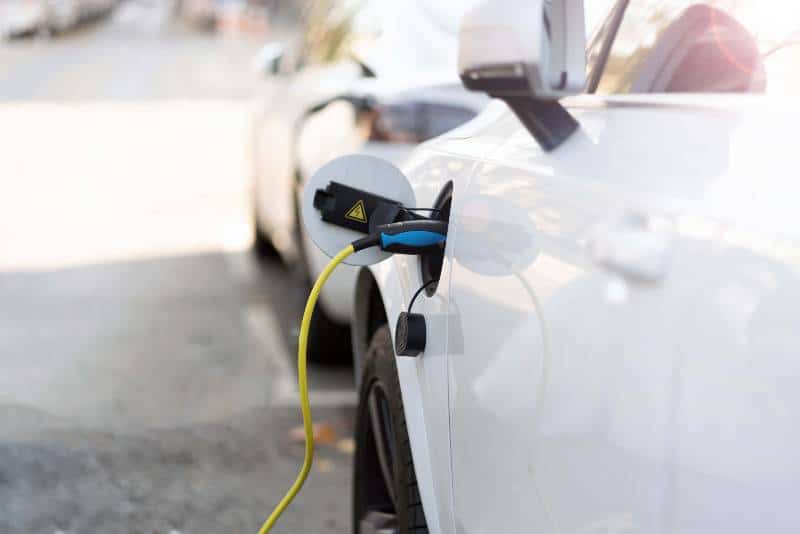
Additional Facts about LFP Batteries
LFP Batteries in Tesla Models
Tesla’s move to LFP batteries in their base models is a game-changer. Not only are the batteries bank-friendly, but they provide the same range as their more expensive lithium-ion counterparts.
The Model 3 with its standard-range battery equalizes itself to the 280-mile range of the VW ID 4 which contains more costly nickel and cobalt materials. This makes owning a Tesla far more accessible, opening up new possibilities for those who have previously been unable to afford one due to price restrictions.
Thankfully, thanks to groundbreaking advances, Tesla has been able to keep up with the needs and wants of its customers while still providing an excellent product by outfitting its cars with LFP batteries.
Charging for LFP Batteries in Cold Weather
To prevent Lithium metal plating on the anode, lithium iron phosphate (LFP) batteries and other Li-ion batteries should not be charged rapidly while the temperature is below freezing. The majority of commercially available LFP battery packs have safety mechanisms to prohibit charging at sub-optimal temperatures.
LFP Batteries are heavier than NMC
However, the difference between LFP and NMC batteries in terms of energy density is smaller at the package level, even though LFP batteries still weigh heavier for the same amount of energy. Blondal claims that Nano One is enhancing the quality and decreasing the cost of cathode manufacture for all Li-ion battery types, including LFP.
LFPs are Closing the Energy Density Gap with NMC
Although the energy density of LFP batteries is lower than that of NMC batteries, according to Dan Blondal, CEO of battery manufacturer Nano One, this difference can be deceiving. Since LFP batteries are less susceptible to thermal runaway, they can be packed more densely into a prismatic form factor rather than the more conventional cylindrical container, as stated by Blondal, who claims that the difference in energy density is mostly at the cell level.
This helps keep the battery pack at a manageable weight. Cell-to-frame or cell-to-pack technology is also being adopted by manufacturers; this makes the cell an integral part of the pack structure and reduces the overall weight of the battery. However, the difference between LFP and NMC batteries in terms of energy density is smaller at the package level, even though LFP batteries still weigh heavier for the same amount of energy.
LFP vs NMC: Which is right for you?
The LTO battery is an alternative to consider if stability and security are priorities for you (lithium-titanium-oxide). Historically, battery life expectancy has been low. Even though a ship can be in service for 30 years or more, a standard NMC battery may only live for 6 years. While LFP may provide longer runtimes, LTO batteries are the superior option. It has a high cycle life of 20,000 to 30,000 times, or anywhere from a few years to twenty years of use (or more) under normal conditions.
The Future of LFP vs. NMC
The LTO battery is an alternative to consider if stability and security are priorities for you (lithium-titanium-oxide). Historically, battery life expectancy has been low. Even though a ship can be in service for 30 years or more, a standard NMC battery may only live for 6 years. While LFP may provide longer runtimes, LTO batteries are the superior option. It has a high cycle life of 20,000 to 30,000 times, or anywhere from a few years to twenty years of use (or more) under normal conditions.
We anticipate the greatest growth in output from the Chinese firm CATL and the South Korean firm LG during this decade.
CATL hopes to have its annual production capacity online at 800GWh by 2030.
200 GWh of new production lines were installed by the top 15 companies in 2021, bringing the overall manufacturing capacity to 600 GWh by the end of the year.
Up to this point, Chinese firms have announced plans to build roughly 3,000 GWh of capacity. Even though Europe and the United States will have eaten into their share by 2030, the Asia-Pacific region will continue to lead the market, with 5,500 GWh of production capacity slated to come online at 300 sites.
The Asia-Pacific region will only produce 69% of the world’s batteries by 2030, with China being the primary contributor. Wood Mackenzie predicts that by then Europe will own 20% of the market.
Contrary to what Wood Mac reported for the Asia-Pacific area, China’s share of global battery cell production capacity in 2020 was around 75% and was expected to fall to 66% by 2030.
Benchmark Mineral Intelligence predicts that by 2030 Europe would be home to 27 gigafactories, with 18 different manufacturers responsible for 789.2GWh of capacity. This amounts to 14% of the global market.
LFP vs NMC Battery FAQs
Does Tesla use NMC or LFP?
A Tesla’s lightweight construction and highly efficient powertrain mean it uses less electricity to travel the same distance as many other EVs in its class. The company’s standard-range vehicles now include LFPs, but the high-performance line will continue to employ NMC batteries for the time being.
What is the downside of LFP batteries?
One of the drawbacks is decreased energy density. In the context of electric vehicles, this indicates that LFP battery packs rarely reach an overall energy density of 60 kWh, in contrast to more conventional li-ion battery packs, which typically have an energy density of over 80 kWh. The nominal voltage of LFP batteries is quite low, which results in a decreased amount of energy.
Who has the longest-lasting EV battery?
The electric vehicle battery pack found in the Tesla Model S is currently the most powerful one on the market. It can travel up to 370 miles on a single charge. Other well-liked electric vehicles, such as the BMW i3, the Nissan Leaf, and others, have a range of 124 to 168 miles on a single charge.
Can LFP batteries be charged to 100%?
The batteries enter an extreme state of charge when an NMC or NCA is charged to its maximum capacity of 100%. As a result of the fact that batteries convert chemical energy into electrical energy, a battery is intrinsically unstable when it is completely charged.
Are LFP batteries safer?
LFP batteries have a longer lifespan than NMC batteries, have higher safety ratings, and operate just as well in most regards as NMC batteries do.
Conclusion
After reading this post, you should have a good understanding of the benefits and drawbacks of each type of battery. LFP batteries are more expensive but have a longer lifespan. NMC batteries are less expensive but don’t last as long. Ultimately, the best type of battery for you will depend on your budget and driving habits. If you’re looking for a low-maintenance option, go with an LFP battery. If you’re looking to save some money, go with an NMC battery.
